Recommendations please - Chopin preludes
Posted by: fred simon on 10 March 2011
What are your favorites?
Thanks in advance,
Fred
Fred,
Your hands are normal and we probably have a similar reach. I can not do a d-flat to f 10th chord either (left or right). As for that 9th bar, rolling the left hand or splitting it comes down to the players preference.
For myself, I have done it both ways but really I prefer splitting it. Rolling it could tend to draw a little more attention to this lower voice all of a sudden and so it is a second choice for me. It is also a little trickier to fit it in nicely but the question then is do you end the roll on the beat (what I'd do) or start it on the beat?
I do prefer to split it but then this requires careful attention to the voicing too. The inner voicing should be consistent with what came before it. The real reason though to split it is that it is next to impossible to get the thumb or the second finger to the final d-flat without an awkward break or jump of some sort. Of course you can cover this up with the pedal but I would prefer to pedal less and have more precision or legato playing where possible just by working this out logically.
Also, doing the split doesn't really make it physically easier for the left hand either by any means. Playing a d-flat to c-flat together with the 5-2 fingers is hard but it gets harder when you have to lift them simultaneously at the same time you finish by playing the d-flat with the thumb.
I'm sure there is no right or wrong but this is just my preference. I like the right hand to sound bell like and be very legato and have the sound float like it is in the clouds and I like the left hand to be just below this aurally but very distinct (not mushy or accented either). This separates the ideas and remember that that repeating rhythm has to carry you through from beginning to end. It is very important to this piece and as you travel through the ABA.
What I like to do is never play a repeated note with the same finger. Of course, in the middle section this can't be avoided when the octaves start but most everywhere else you can almost pull this off easy. The result is a way to make the line sound more dramatically even and convincing. Don't forget to hang onto the various half notes or dotted half notes as well as the other holds through out. You'll mostly be repeating from 5-4-5-4-5 finger etc. With practice, then you will be able to deal with three lines of thought independently going on.
Fred, how do you deal with the other jumps in the left hand. For instance, from say bar 9 to 18, I hope you are doing a lot of finger switching 1-5 and 5-1 on the a-flats and eventually the f's. Again, my advice is to learn this as much as you can without the pedal and then use it sparingly to add in the color for the right hand later. Without the pedal you'll see quickly why I suggested this as the left hand would sound quite disjointed and uneven unless you work out some sort of fingering solutions. It is possible to play the left hand legato and separate the sound between each note by playing repeated notes with a new finger each time and then working on some finger switching before releasing a note.
I focused on the left hand mainly here as I think technically this piece's difficulty is in the left hand. In fact, many would be surprised to hear that Chopin is very difficult in the left hand period since as listeners one may easily be fooled into following only the melody in the right hand. The majority of the Preludes have left hand difficulties. Turn the page to the b-flat minor (16) which is probably the hardest Prelude to play and this is mostly due to the wicked left hand leaps.
In general though, I find most of Chopin's music falls very nicely under the hands unlike some composers (especially more modern composers).
I hope this didn't bore you and that it was helpful somewhat at least for another opinion. If you have other questions going along let me know as I enjoy talking about this kind of thing. I learn a lot from it too.
One thing I did learn out of this all is how different the different editions can be. I used to use the Paderewski years ago and for the past 20 years I probably stuck more to the Henle Urtext. Not sure who to believe now as their is quite a difference in consistency. For instance, the half notes - sometime dotted in one, not dotted in the other etc.
Regards,
Doug
Argerich.... Schnabel... Serkin
Other interpretations worth listening to
Interesting suggestions Michael! Two pianist not really associated with Chopin or the Romantic period but more so with the core Austro-German repertoire.
Serkin was a bit of a surprise but Schnabel is the one that threw me as I've never seen a recording. It must be a very early recording? Is there a recording still around?
Thinking of great pianists in the Austro-Hungarian-German tradition, Edwin Fsicher was a great exponent of Chopin by reports from such luminaries as Brendel. Fischer never played in Chopin in public as his immense musical self-doubt always made him shy of it, because sometimes in music he found very difficult, the wrong notes came by the fistful if he got nervous.
But there is a lovely story from Dennis Matthews [a really lovely British Pianist, possibly even finer than Solomon on occasion, but again shy of performance and recording] who was coached by Fischer.
Apparently he had some Chopin on the piano and was trying to play it for Fischer, somewhat nervously. Trying to be be as musical as he knew how ... Fischer commented that it was so wonderful, but Chopin was not Haydn! Crest-fallen, Matthews let Fischer play the piece, and was staggered at the subtlety and beauty that Fischer brought out. The lesson continued with a Beethoven Sonata, where Matthews found the style so much less difficult to pin down!
As a small matter of interest, it seems Matthews made only two or three gramophone recordings [all for EMI] including the best ever recording I have heard of Mozart's A Major Piano Concerto, and the Triple "Piano" [Harpsichord] Concerto in C, by Bach with Fischer, and another Fischer-student-friend on the third solo line. This one is still to be had on CD and is one of the very few piano recordings of Bach harpsichord music that I accept without any reservation - recorded in 1950 as a 78 recording on wax, one of the very last, and issued for the Bach bi-centenary year only weeks after the recording session.
About Schnabel, I knew that his performances of Chopin were legendary, among friends, though I was not aware of any recordings as such [EMI were notoriously risk shy in allocating repertoire for recordings to the leading artists], or even any large number of Chopin recitals in his long career.
I would be fascinated to heard how Schnabel performed the music of Chopin for sure!
[One very sad gap in the great 1930's HMV series of Busch Quartet recordings is the complete absense of Haydn. Legend has it that they were even finer in Haydn than Beethoven, Brahms, and Schubert, but the company was recording a Haydn Quartet integral with the Belgian "Pro Arte Quartet" so that all others were left out at the time. Sadly that very fine cycle was less than half finished in 1939, when war intervened, and shortly after the Pro Arte Quartet played their last together. American Columbia recorded the Busch in two 78 sides in the early 1940s of the very last Quartet music Haydn wrote, and this simply makes the loss all the more frustrating, as these fragments are transcendental in that singular Busch Haydn recording session].
ATB from George
Doug, yes, pedaling is crucial. I often have my students practice playing as legato as possible without using the damper pedal, and then add pedal where necessary.
The amount of pedal is also a factor, which, unfortunately, can only be realized when playing on a well-maintained, high-quality instrument. I read somewhere that in the strictest of strict Russian-school training, the ideal was twelve discreet gradations of pedal depression ... twelve! I suspect much of this is apocryphal, as I just can't imagine how one would actually be able to perceive that many gradations ... I mean, really, how would one tell between level 8 and 9, for instance?
But the concept of half-pedaling is very real, of course. I can achieve at least four distinct pedal gradations: off, roughly a third of the way down, two-thirds down, and fully depressed. I can't imagine being able to control with finer resolution than that ... most of the range between off and full-on is fairly ambiguous. I suppose that if one played the same instrument all the time, that over the years one could develop control to a finer degree. But to translate to any given piano? Not likely.
By the way, speaking of pedals, an interesting observation: I have a photocopy of #15 from some edition which indicates una corda (soft pedal for those here not familiar) for the first eight measure of the C# minor section, then eight bars of tre corda, then una corda again, etc. But the urtext edition has no such indication. Of course, they both indicate "sotto voce."
Another observation regarding the damper pedal: Blechacz actually holds the final G major chord of #3 through the two pick-up notes (B to B) of #4, E minor. At least I assume he uses the pedal ... I suppose he may have just held the notes with fingers, but I do feel like I'm hearing the sympathetic resonance of the whole piano that one hears with the use of the damper pedal, as opposed to just hearing the ringing of specific notes being held. In any case, the effect is wonderful, the musical equivalent of a dissolve in film. Is it standard practice to do this when performing all the preludes as a group? It certainly isn't indicated in the score.
Finally, now that I've digested the entire Blechacz recording, I must give it my highest recommendation. Not that I can't imagine another performance equally magical -- it's the only one I've heard of the entire cycle -- but OMG (like the kids say), this is pure poetry! His ever-so-delicate touch in quiet passages, the ability to render the piano as almost a breath instrument, is uncanny ... among the very finest I've ever heard from any pianist. It's almost like a drug ... I can't get enough of that dark muted bell tone!
...Another observation regarding the damper pedal: Blechacz actually holds the final G major chord of #3 through the two pick-up notes (B to B) of #4, E minor.
... I can't get enough of that dark muted bell tone!
Interesting post Fred. It is true that pedalling is an art in itself.
I believe that the connection between the G-major and e-minor was intensional by Blechacz. In fact, while that opportunity doesn't really exist elsewhere, I'm sure Blechacz is playing the 24 as a set and not as individual pieces. He must have had a dialog with the recording engineer/producer concerning this.
As a set, it is fascinating to hear the connections between all the major/minor keys. It is also a strong case (as with Bach's WTC or Shostakovich's P & F's) to posit that key really does matter in the end in finding the desired mood and effect where C+ or A- will just not do justice anymore. Again, just my two cents worth...
...dark muted bell tone - yes - I love it.
Regards,
Doug
Of course, you do know that D minor is the saddest of all keys, right? (insert emoticon here)
Careful ! Actually, I like all minor keys equally and don't really discriminate even though my avatar clearly shows the piano spinning around the puck in c-minor : ]
I have to thank you Fred for starting this topic. You had brought up the b-minor and D-flat major Preludes and this caused me to look at these closer over the past couple of weeks. I've been so focused on other music for a while that I had really ignored the Preludes over the past year. On my own I don't think I would have started back beginning with these two. Especially, the D-flat major (Raindrop) since I hadn't touched it for years, really. I felt like a kid again in reacquainting myself with it and now have the ambition to start up some work on the others as well in a fresh new light. For some reason, the time just seems right. The break was good and now I feel like spending some quality time with them again.
Probably, this is the only Prelude that I have a very different approach than Blechacz. I really like to hang on the Sostenuto and prefer a more melancholy sense with a relaxed tempo to bring out more of the sadness especially in the c-sharp minor section.
I don't think I've ever timed myself before but I was very interested to see how I would compare in this instance, as I can hear how different we are.
Blechacz comes in at 4'-55". Just roughly, estimating on my wrist watch, I do not think I exceeded 8 minutes and probably was closer to 7 1/2' which is 35 or 40% slower. I'm sure this changes from day to day depending on my mood. And you know, this awareness might lead me in the future to try to view the piece in a different light and at a faster clip.
This is one of the luxuries of being able to spend time alone with the music and play it only for myself and not be worried or concerned what anyone else thinks.
Regards,
Doug
Careful ! Actually, I like all minor keys equally and don't really discriminate even though my avatar clearly shows the piano spinning around the puck in c-minor : ]
Probably, this is the only Prelude that I have a very different approach than Blechacz. I really like to hang on the Sostenuto and prefer a more melancholy sense with a relaxed tempo to bring out more of the sadness especially in the c-sharp minor section.
Doug, it's a joke from This Is Spinal Tap ... Nigel Tufnel: "It's part of a trilogy, a musical trilogy I'm working on in D minor which is the saddest of all keys, I find. People weep instantly when they hear it, and I don't know why."
Or perhaps you'd prefer what Sid Beckerman, the legendary klezmer clarinetist, said: “To you, D minor is just a key. To me, it's a living.”
Getting back to the Db Prelude, I find all the melancholy and sadness I need (and I need plenty!) right in the score itself, and none less as played by Blechacz, regardless of tempo ... doesn't seem too fast to me, seems just right. Speaking of sadness, I find the harmonic/melodic changes in bars 10-11 exquisitely sad ... the move from a Gb major chord to a Db major chord and then the unexpected dark turn to Ab minor is deliciously melancholy.
By the way, I'm still interested on your thoughts on the use of una corda in the C# minor section ... not in the urtext, but do you observe or not?
Fred, I guess we'll have to agree to disagree about the effects of tempo on a piece of music. While I would never really push that one is right or the other is wrong, for me personally and hopefully as objective as one could be, choice of tempo does have an effect and seems to change the meaning or perception of the piece. I hope I'm not just imagining this.
Having said this there is something probably related to how each individual defines or perceives certain emotions to themselves. I really don't know how a listener perceives the same notes differently from the next listener and this is what makes us all unique, however, I can say that for me, as a player, I somehow "feel" or "realize" a different outcome when, for example, I would play this Prelude to achieve a 5 minute overall timing compared to say an 8 minute timing. Again, this is only comparing for sake of argument the overall timing and not all the other things that one can do musically.
One of the benefits for me in taking a little more time with the piece now is how this allows me to focus on the different voicing, counterpoint, and harmony etc. Maybe, to a listener this may not make sense unless they were looking for the same outcome. It would more than likely seem quite boring and like a deliberate slow motion scene in a movie. It is just a phase I'm in now where, in a piece like this, I am enjoying a different approach and maybe focusing on the writing style of Chopin. Also, I find to actually allow my brain to make sense of everything I have to work it all out slowly.
When I was 10 or 12 I guarantee you that I ran through this piece a might faster. This was because I didn't quite have the patience yet to focus on the details. The goal of a child is probably just as simple as I have to get through this and then I'll be done. Also, you are in a stage of really learning notes and developing a technique.
Now, many decades latter, I've come to a point where I derive a lot of joy and satisfaction from all the deeper musical attributes and meaning behind the score. One of the things that forced me in this direction (besides the aging process) about 10 or 15 years ago was in my struggle to learn Bach. Being able to process and synthesize the different voices and lines in music simultaneously is really a big challenge for me but it is something I really appreciate now. It still takes me some considerable work to change the perspective in a 3, 4, or 5 part work each time. For example, in a three-part fugue try leaving one of the voices out and sing it instead while you play : ]. Bach is so fascinating as you can see there is really a limitless amount of mathematical outcomes for the player and listener.
I like the bars 10-11 too for the interesting progression but it is the third beat of bar 9 that for me it all begins. (a-flat major to a-flat minor). You have the first eight bars as one big glorious phrase where all seems serene and then this new phrase starts with some interesting news.
I did use the word sad but I hope this doesn't connote something unintended. I do not find this piece to be literally 'sad' but if it is possible to say in words I do still find joy in sadness. It is more peaceful than anything with the repeated notes falling like raindrops. I guess this is why I like minor keys the most. To me they are the most interesting.
Yes I have seen that version where the una corda and tre corde markings as well as a host of other editorial details have been added. In fact, this may have been the edition I had when I was a kid as I do remember using the una corda etc. I do not use the una corda now at all. This may depend on the piano being used though. On my piano I do not need to and I try not to use the pedal at all in this section until it turns into the E major and is fortissimo.
What edition are you using? One thing I wonder about is at bars 5-6, 24-25 you notice that the d-flat/f is missing on the fourth beat every time on this second repeat of the theme. It is also missing on bars 76 and 80. I think this is intentional?
What I also would like to know is about bars 5 and 24 and on the second beat d-flat/f half note. In my Henle Urtext it is a half note. In the Paderewski it is a dotted half note? For bars 76 and 80 it is a dotted half note in either edition.
How do you deal with the Bar 79 smorzando then a slentando almost immediately and then ritenuto 7 bars later and then a fermata over a whole note to end.
Do you ever return to your original tempo after bar 79?
This is a real task that Chopin has given here. If you should choose a less leisurely pace as does Blechacz, I suppose you have a lot more room to work with in putting on the brakes. Because I'm already coming into this at a quite relaxed pace I had to wrap my brain around this concept of truly dying out in degrees over 11 bars. You certainly have to be committed here to staying the course and focused on nothing else.
I sure am glad that the great composers never had to deal with i-Phones and Twitters and a generations of multi-tasking ADD prone people. A piece like this could never have been conceived in this environment. You have to be in a place where time stands still or certainly doesn't matter.
A difficult ending for sure to the longest Prelude....
Regards,
Doug
Fred, I guess we'll have to agree to disagree about the effects of tempo on a piece of music. While I would never really push that one is right or the other is wrong, for me personally and hopefully as objective as one could be, choice of tempo does have an effect and seems to change the meaning or perception of the piece. I hope I'm not just imagining this.
But I don't think that we disagree about the effect of tempo. When I wrote "regardless of tempo," I didn't mean that tempo has no effect ... of course it does. What I meant was that aside from the issue of tempo, there's plenty of melancholy to be wrung from the melodic/harmonic content itself. Where we disagree is that I think Blechacz' tempo is pretty much right on the money.
I do take "sad" as you intend, I believe. As Joni Mitchell wrote, "there's comfort in melancholy." Pleasure, too. Bittersweet. To pick up a bit of another thread from the forum, a minor 3rd has an inherent dissonance with the major 3rd overtone an octave and a 10th above the fundamental, which definitely makes things more interesting. Much of my favorite music makes significant use of playing minor against major in various ways, and it's also a big component of my own compositions as well.
Regarding the discrepancies in editions, I'm primarily using the Henle Urtext. I have two other unidentified editions on photocopy, which agree on some, but not all discrepancies. I'll try to lay it out:
- The Urtext is missing that Db/F on the fourth beat of bars 5, 24, 76 (which, because it corresponds to measures 1 and 20, should have the Db/F), and 80 (which doesn't have the Db/F because it corresponds to bars 5 and 24, which don't have it) ... the pattern Chopin set up is that each first iteration of the phrase has the Db/F (bars 1 and 20; 76 being the lone exception), and each second iteration of the phrase (always four bars after each first iteration) doesn't have it.
- Unidentified edition "A" agrees with the Urtext on all of the above, but edition "B" does have the Db/F on the fourth beat of bar 76, which actually adheres to the pattern Chopin seemed to have set up, being the first iteration of a pair. In any case, I think it's definitely intentional, at least in the phrase pairs that adhere to the pattern ... the omission in bar 76 of the Urtext and in edition A may be merely an anomaly that Chopin overlooked. Or not.
- As far as the issue of the length of the Db/F on the second beat, the Urtext has, as you said, a half-note on bars 5 and 24 (and in 1 and 20, for that matter), but a dotted half note in bars 76 and 80.
- In edition A, the Db/F on the second beat is a half-note in bars 1 and 20, and a dotted half-note in bars 5 and 24, and in 76 and 80. In edition B, all those occurrences of Db/F on the second beat are half-notes.
- Also, the Gb/Eb on the first beat of bars 2, 6, 21, 25, and 77 are all half-notes in the Urtext and in edition B, but are all dotted half-notes in edition A.
I haven't fully vetted all editions for further discrepancies ... I'll leave that to some graduate assistant. (insert emoticon here)
Doug ... had a chance to look these over? At your convenience ...
Best,
Fred
Fred,
Apologies for my tardiness. Currently, this just a function of trying to keep too many balls in the air at the same time. Unfortunately, my response this morning will also be limited for the same reason.
I use the Henle Urtext and have used the Instytut Fryderyka Chopina Polskie Wydawnictwo Muzyczne whose editor was Paderewski. The Paderewski is very common and the one I see the most. In fact, the Dover, which is a cheap and readily available over the years, uses the Paderewski edition.
I wonder where your Edition A and B come from? It seems that A follows Paderewski the closest and B is possibly a combination of the two.
Minor point about your point #5. It is interesting that a pattern consistently exists until bar 81 where the e-flat/g-flat disappears in an eighth and the c in a quarter beat. This is very appropriate to signal the end is near. There is absolutely no uncertainty about this as Chopin is clear here.
I can fully understand the sentiments of many that our little discussion here is useless and of no importance but I have personally found it to be invaluable. In relearning this piece, this opportunity has presented the questions of what would Chopin have wanted here (because there are some inconsistencies in the text).
From the listener's perspective, I agree, that this sort of thing probably matters not one iota unless you are a listener of details and find this sort of thing interesting. Some music also is more prone to interpretation and meaning behind the notes than other music where the composer does not have any desired consequences other than to provide some harmless musical enjoyment.
Why this is utterly important for me is that the outcome is really the sum of the details and a composer such as Chopin is especially focused and suitable for imagery and ideas (particularly in this case the Preludes) and I don't believe that Chopin was typically careless in this regard. In fact, I think the opposite is true. When using a score you can simply go along with the score no problem but in learning a piece and consequently learning it from memory there is a need to understand the details and patterns.
When there is a pattern set up by the composer and then a logical change or highlight point intentionally made by the composer then this is easier to remember and to present (as I described in bar 81 above) because there is some implied meaning associated with it. As I discovered with this 15th Prelude, there is an amazing amount of variance among editions but nothing that would alarm a casual listener in any way. A player has to notice these things and should be aware of them at the very least.
Learning music is really about learning how to present sound to the ear. Whether to hold notes longer or shorter in the case of discrepancies presents an interesting choice for a musician and in these cases you have to ask many questions before you can in some respects assume what the composer might have meant.
So for now, I still have mixed feelings about which way to go in learning this piece. I can rationalize the different choices, however, I am slightly leaning now to mark up my Henle Urtext with a few dots on those half notes where they were missing. The reason is is that it makes sense to carry this middle layer of voices through to exactly mirror the melody as this adds to harmony or reinforcement to this main voice. However, not adding it does shake things up a bit and may be part of the way Chopin is adding randomness to what could be a rather predictable pattern?
Best Regards,
Doug
Hi Fred,
Not sure if I answered the question satisfactorily? Are you still working on the d-flat major Prelude? Remember, you had a deadline imposed on you ![]()
Regards,
Doug
I know many or at least the most common recordings of the Preludes have already been suggested above. I thought I'd list a few other recordings that I've also been playing over the past month or two. All have something interesting to offer in one way or another. As I keep looking I know I'll find other lurking in my library.
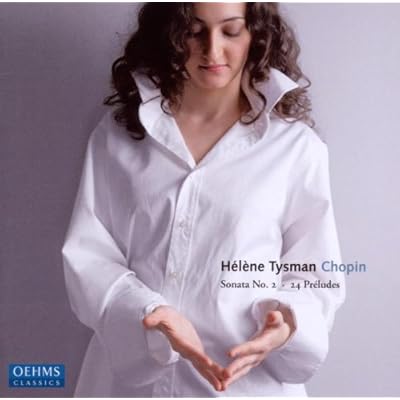
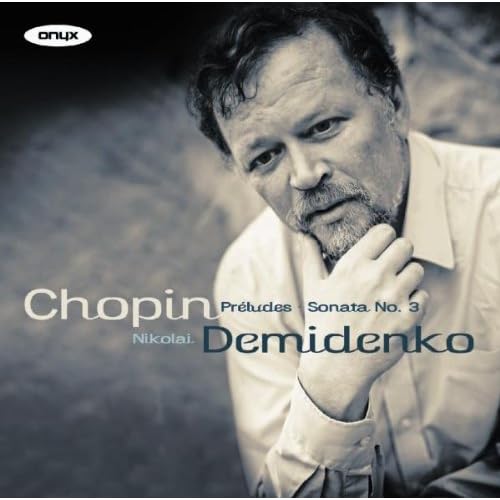


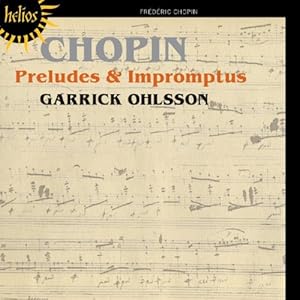

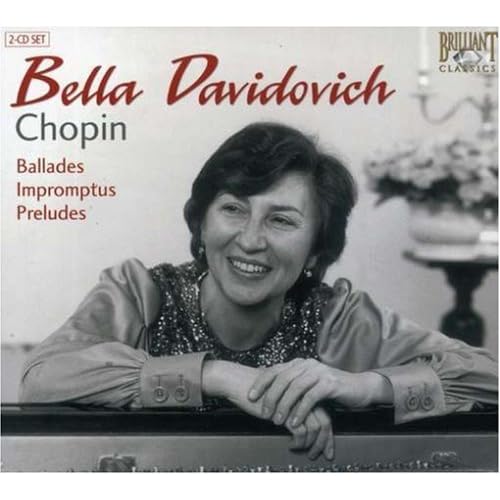
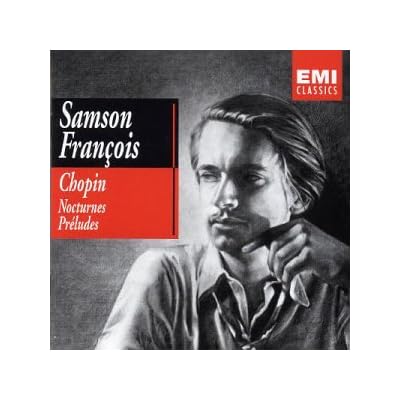
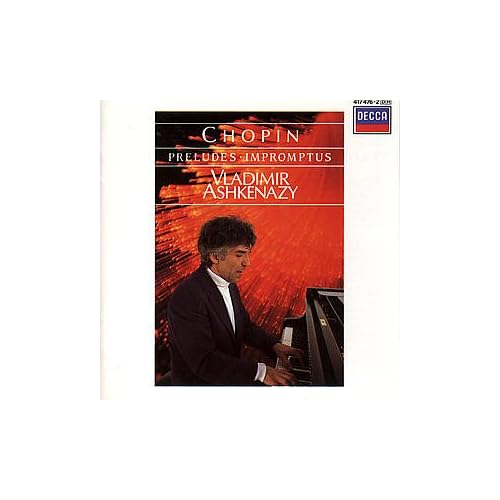
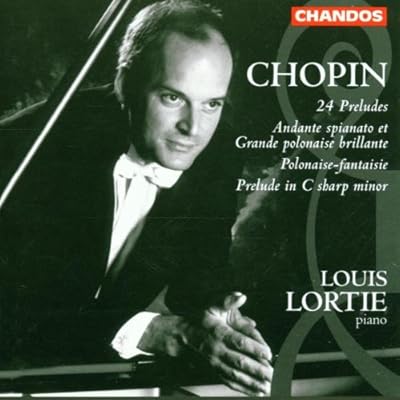
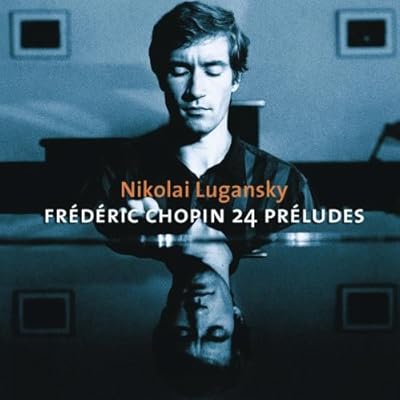


Summary of the recordings suggested from the start of the thread. (Demidenko and Sokolov are in the post above. Does anybody have any other good recordings to suggest?




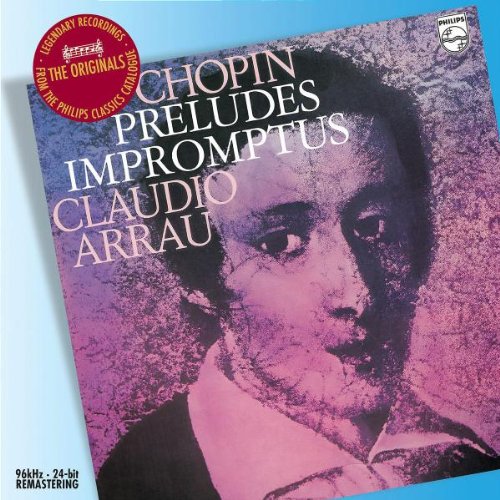


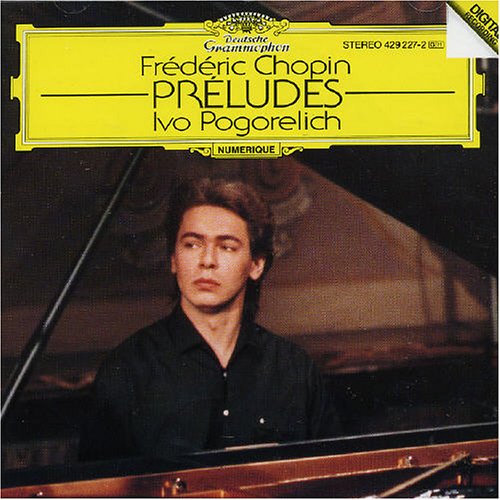

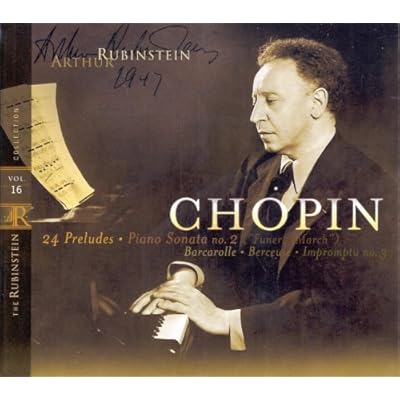
I know many or at least the most common recordings of the Preludes have already been suggested above. I thought I'd list a few other recordings that I've also been playing over the past month or two. All have something interesting to offer in one way or another. As I keep looking I know I'll find other lurking in my library.
Doug, you have all of those recordings in your library?! Wow! Are you that thorough with recordings of other major works, or are the Chopin Preludes an anomaly?
Fred, I own all of these recordings except the live recordings of Arrau and Bolet. I'm also sure I have other recordings too that I may have misplaced or filed in the wrong spot somehow over the years and will come upon them by chance when I'm looking for something else. I have a similar focus and the resulting multiple versions of any music that I find interesting. This didn't happen overnight, of course.
This is how my library has evolved. In the beginning years, as a teenager, when I only had a couple of hundred LP's in my library, I wasn't especially familiar with the entire scope of classical music. I typically bought according to what I was studying at the time (mostly piano related) on my very limited resources so my buying was pretty haphazard, at best. Then in the mid-eighties, when CD's started taking over and I was a little older and wiser I became more logical in my buying patterns.
The first goal I clearly established was to hear all the music written by my favourite composers. It started with Chopin and once this was done, I expanded slowly in each direction. This took a very long time but eventually once this was done then my focus came to expanding my understanding as to how different artists interpreted the same pieces.
I'm glad I did it this way. First, in order to understand a composer, one aspect was to learn as much about them as possible by being familiar with everything they wrote as well as there lives. Second, I learn so much more about the possibilities of the music when I am challenged by different viewpoints and thus the need to have multiple versions.
In general, when it comes to Haendal, Bach, Haydn, Mozart, Beethoven, Schubert, Schumann, Chopin, Liszt, Grieg, Brahms, Debussy, Ravel, Rachmaninov, Scriabin, Shostakovich, Prokofiev, I can say my passion and desire to hear this music is endless. With most of these guys, my collection is complete as well as massively duplicated. Others not listed have not been forgotten. Though they pale significantly in size they are slowly growing too. It is just that those listed were probably the most prolific writers of their time and the ones I spend the most time with.
Cheers,
Doug
PS: Is there a crazier hobby or interest to have?
